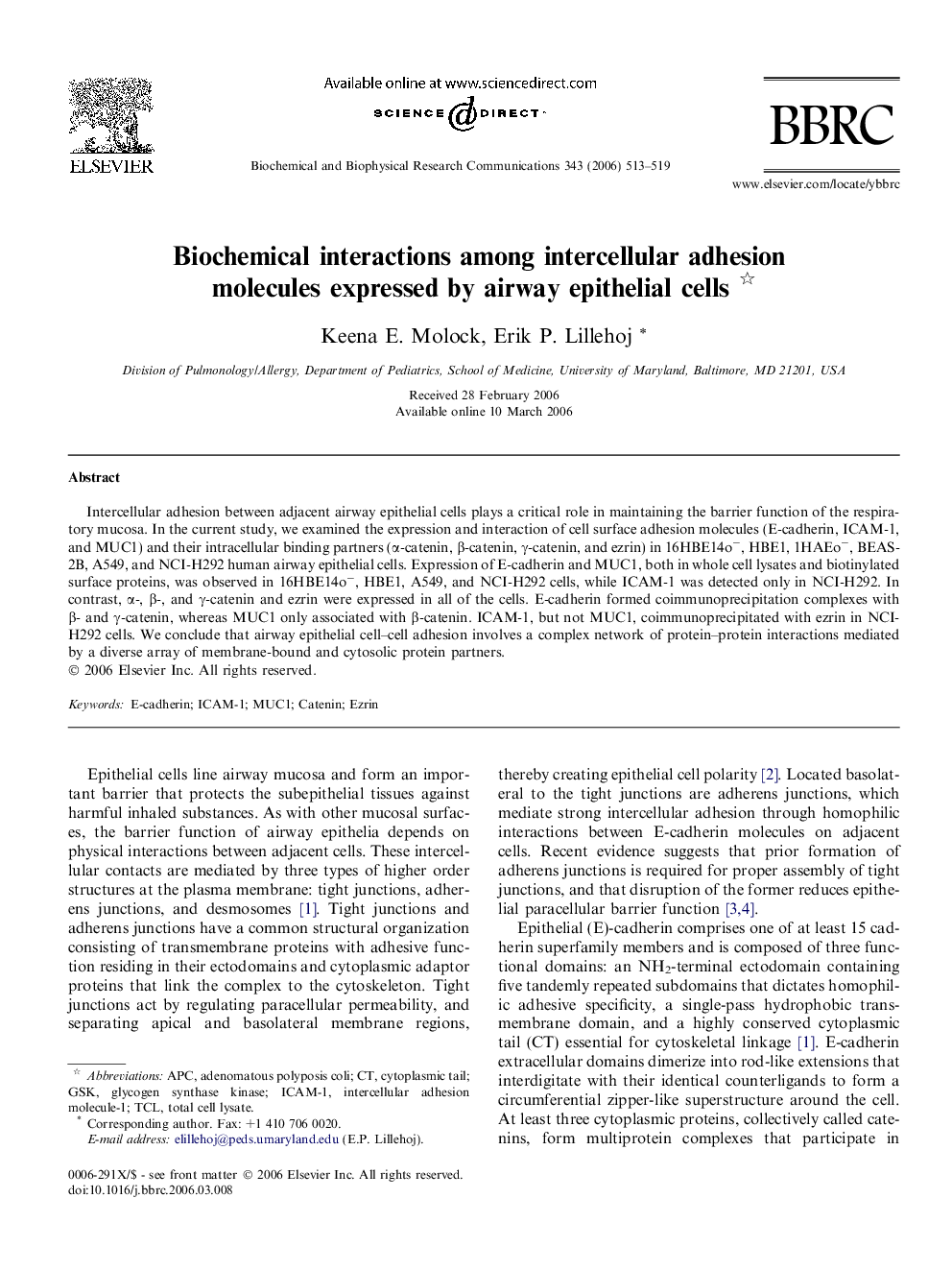| Article ID | Journal | Published Year | Pages | File Type |
|---|---|---|---|---|
| 1940015 | Biochemical and Biophysical Research Communications | 2006 | 7 Pages |
Intercellular adhesion between adjacent airway epithelial cells plays a critical role in maintaining the barrier function of the respiratory mucosa. In the current study, we examined the expression and interaction of cell surface adhesion molecules (E-cadherin, ICAM-1, and MUC1) and their intracellular binding partners (α-catenin, β-catenin, γ-catenin, and ezrin) in 16HBE14o−, HBE1, 1HAEo−, BEAS-2B, A549, and NCI-H292 human airway epithelial cells. Expression of E-cadherin and MUC1, both in whole cell lysates and biotinylated surface proteins, was observed in 16HBE14o−, HBE1, A549, and NCI-H292 cells, while ICAM-1 was detected only in NCI-H292. In contrast, α-, β-, and γ-catenin and ezrin were expressed in all of the cells. E-cadherin formed coimmunoprecipitation complexes with β- and γ-catenin, whereas MUC1 only associated with β-catenin. ICAM-1, but not MUC1, coimmunoprecipitated with ezrin in NCI-H292 cells. We conclude that airway epithelial cell–cell adhesion involves a complex network of protein–protein interactions mediated by a diverse array of membrane-bound and cytosolic protein partners.
